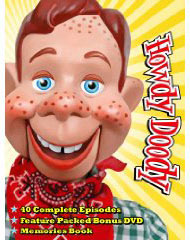
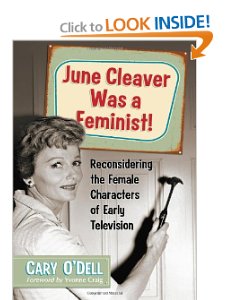



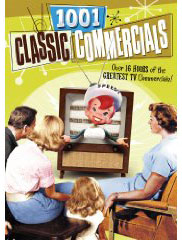


 |
 |
 |
 |
 |
 |
 |
 |
| |
|||||||
|
Born Robert Emil Schmidt in Buffalo, New York, Smith began his career in radio by performing as a young musical entertainer on a local program The Boy’s Club Of The Air at age 11 on station WGR. By 1933, Schmidt got together with young men Johnny Eisenberger and Elmer Einsenberger to perform on another local Buffalo radio program The Simon Supper Club Of The Air. The three fellows performed songs on the show and eventually went to perform on other radio shows including The Kate Smith Hour on CBS. For a time, the trio worked in vaudeville theaters in NYC but the cheap hotels and the lack of adequate pay and poor working conditions didn’t sit well with the team and they returned to Buffalo where Bob and Johnny Eisenberger became staff pianists for WGR Radio. Smith created a summer theater with his friend Cliff Jones and his childhood sweetheart Mil Metz. The theater’s business only lasted the summer of 1933 and Schmidt returned to work at WGR. He went to perform onThe Cheer Up Gang (a musical program for señor citizens) and then left WGR and moved to WBEN Radio where he co hosted a game show Early Date At Herrenger’s with a former radio broadcaster from WGR Clint Buehlman. The show became popular with Upstate New York listeners and Schmidt also mc’d a Sunday afternoon program The Quiz Of Two Cities. Robert Schmidt changed his name to Bob Smith and in 1946 his talents would come to the attention of WEAF Radio (The NYC flagship station of WNBC Radio) who wanted someone to host their weekday morning radio program. After negotiating with WBEN exec Bob Thompson, Smith and his wife Mil ( they were married on Thanksgiving Day, 1940) Thompson gave Smith his blessing and the couple moved to NYC where he hosted a weekday morning program that aired from 7:30 to 8:00 A.M. but the show soon moved to the 6:30 and then to the 6:00 A.M. timeslot. A year later, the station execs at WEAF approached Smith to host a Saturday morning game show for the kids. He accepted the offer and he began mc’ing The Tripple B Ranch where he would engage his listeners and studio audiences in songs, music ,interviews and quizzes. One day the director wanted to add comedy to the series and he asked Smith What characters do you Smith tried a few funny voices until he began performing as a country hick that he named Elmer. The character became popular with the kids but during his use of this voice Smith would utilize the words Well? Howdy Doody perhaps misinterpretating the phrase for the name of another comedic character? The youngsters involved with the show would inquire, Well? Where is Howdy Doody? Smith saw that the kids needed to see this character and he changed the name of Elmer to Howdy Doody at the same time. The heads of WNBT TV Ch.4 (WRCA and now WNBC) were Smith, along with a few well performers, were hired to mc those kids TV specials with a puppet version of Howdy on a program titled Puppet Playhouse which was slated to air on Saturday evening December 27, 1947. The show was basically a video version of Triple B Ranch except for the addition of old movies screened in between the games, songs, music, interviews and comedy bits with the puppet. There was one problem. The show’s first puppeteer, Frank Paris, was unable to get the puppet ready for that first broadcast. NYC was besieged by the worst snowstorm on record. Hence, Paris was unable to get the puppet to the studio and only a few kids could sit in The Peanut Gallery. To deal with the situation, Smith came up with the idea that his country pal, who had never appeared on TV before, developed a bad case of stage fright and hid inside of the mc’s desk drawer, refusing to Puppet Playhouse became even more popular and when the snow drifts were finally removed Mr.Paris brought the puppet to the studio and Howdy made his first appearance on the show which was set against the backdrop of a local clubhouse. Unfortunately, the character was not embraced by the fans. Paris made Howdy look hideous so the kids had trouble warming up to him. Eventually, the show moved to a Monday-Wedneday & Friday evening timeslot and even to a Monday thru Friday schedule, adding Bob Keeshan to the cast when he took on the role of the prankish clown Clarabell. By 1948, it was decided that a better looking puppet was needed. Frank Paris was dismissed and a scramble was made to create a new Howdy. The puppet was being built but Howdy was still needed to appear on camera to do the commercials and to perform with the host. America was in the midst of the 1948 US Presidential election and, after seeing his running mate Mr.X, Howdy knew that his facial features would need fixing.
Other changes were made to the show. Original songs and scripts were created by the show’s head writer Frank Kean and other characters (live and puppet like) were added to the repertory company. As Dayton Allen, Bill Lecornec and Judy Tyler performed in songs and skits and Rufus Rose created and manipulated the marionette citizens of Doodyville. Smith also under went a change from clubhouse manager to a lion tamer with a traveling circus and finally to his familiar cowboy persona. The show became NBC TV’s biggest hit and Martin Stone, the head of the Smith was also hired to do personal appearances at many venues he would travel with Clarabell and ofttimes with some other cast members. More often than not Howdy Doody would be broadcast from such locales as Hollywood,Cal. and from The Aqautaina in Twin Cities, Mn. By 1952 the casting changed. Dayton Allen, Judy Tyler and Bob Keeshan left the show and they were replaced by Bobby Nicholson (a popular musical entertainer, songwriter, comic actor and bandleader that Smith knew from his radio days in Buffalo), Allen Swift, Bill Mutcheon and Marti Barris. Nicolson took on the role ofClarabell but he didn’t care for the character and was replaced by another musician Lew Anderson (who at that time was part of a jazz singing team The Honeydreamers) Anderson would take on the part of Clarabelland play the part for the remainder of the series’ run. By the 1950’s the series title changed to Howdy Doody. Buffalo Bob also hosted a radio version of the kids show on NBC and a prime time musical/variety program for the adults The Bob Smith Gulf Show and Everything was going well until 1954 when Smith’s frantic work schedule caught up with him and he suffered a heart attack. It took him a year to recover from the attack, his doctor warned him not to drive from his home in New Rochelle, New York to NYC and back.
For a time, guest performers like ventriloquist/entertainer Paul Winchell and Gabby Hayes and WNEW NYC radio personality Ted Brown would serve as the program’s substitute host. Buffalo Bob would appear on the show briefly from his makeshift tv studio in the basement of his Westchester New York home (The plot stated that he was out of Doodyville on a secret mission for the US Government and couldn’t be in the studio in NYC). It was not until 1955 that he was able to return to the show at The NBC Studios in Manhattan (a limo service agreed to drive Smith to NYC and back) and the show was still a hit in the ratings until ABC TV premiered The Mickey Mouse Club. Howdy ratings began to slip and the show moved back to a Saturday morning timeslot in 1957 where it remained until Saturday September 24,1960 when the last show (which was taped in advance) aired. The last program had everyone getting ready to pack up and leave Doodyville. In the interim, Clarabell let everyone know that he had a big surprise for them. It was not until the last minutes of that final program that Smith went onto other projects. He made few TV appearances. He was seen on the game shows Pay Cards and The Generation Gap but it was not until the winter of 1970 that he was invited Howdy Doody Time! and he engaged the students in songs, comedy bits and answered questions about the show’s history. The personal appearance at the University of PA was so successful he made more appearances at other colleges and schools and even at malls and shopping centers. Lew Anderson would join him at those personal appearances and so did Milt Neal (one of the creators of the show) who would draw cartoons of the By the late 1970’s, Smith and his family moved from their New Rochelle home to a place in Fort Lauderdale, Fl (he also maintained a summer retreat in Maine and four radio stations for a time) and he was soon approached to do a New Howdy Doody TV series.
The series was taped at The Video City facilities in Miami with Anderson, Nicholson and Lecornec rejoining him. Judy Tyler had died tragically in a car crash in the summer of 1957 and Marti Barris was not available to do the new series. Marilyn Patch was hired to play Happy Harmony the Singing schoolteacher, Paul Ashley became the show’s new puppeteer (Rufus Rose had passed away in 1975) and Jackie Davis became the resident musical director. The New Howdy Doody Show was seen in national syndication. WNEW TV Ch.5 in NYC aired the show weekday afternoons starting in the fall of 1976 but the show was not a hit. After airing a certain number of programs The New Howdy Doody Show was cancelled. Smith’s TV appearances became few and far between. He appeared on Good Morning America with Clarabell and Howdy, on Hour Magazine, on Dick Clark’s TV Bloopers And Practical Jokes and on NBC’s 60th anniversary TV tribute in 1986. He also appeared at a seminar honoring the show’s 40th anniversary in 1987 at The Museum Of TV & Radio in NYC and he hosted a 40th anniversary tribute to the character on the Fox TV Network. Smith also helped Jeff Judson found The Howdy Doody Collector’s Club and appeared at some of the club’s conventions. He continued to do personal appearances and was a guest on The Sally Buffalo Bob Smith succumbed to cancer in the summer of 1998 but his contributions to kids TV will never be forgotten. |
Amazon Prime - unlimited streaming PR4 & PR5 Pages for Advertising
|
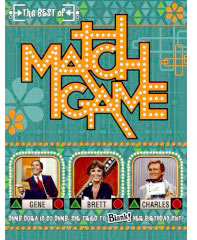 |
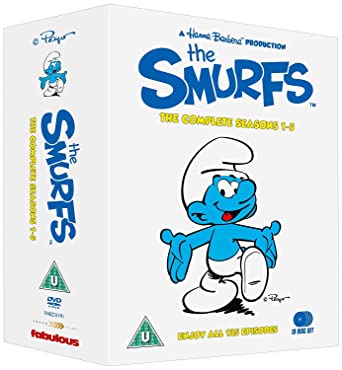 |
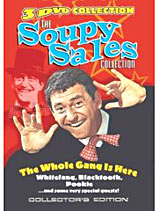 |
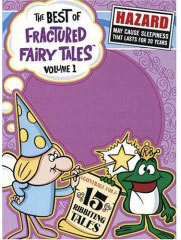 |
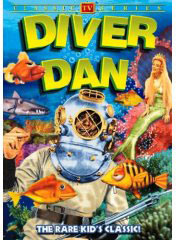 |
 |
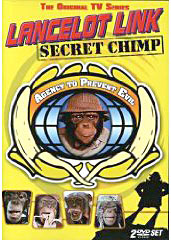 |
|
|
||||||||||
Save money! |